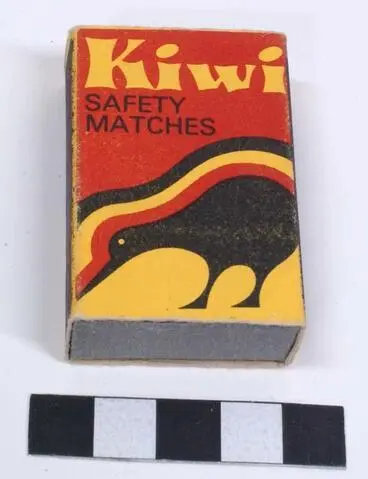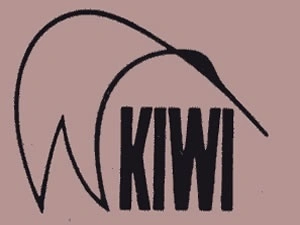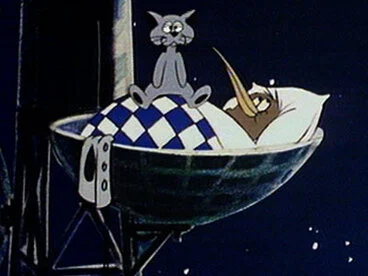Saving the kiwi
A DigitalNZ Story by Zokoroa
A description of the kiwi - an endangered native flightless bird and a national icon of NZ
The kiwi is an endangered native flightless bird that has become a symbol of New Zealand as a nation since the early 1900s. The terms Kiwi and Kiwis are also used to represent New Zealanders. The following looks at the life-cycle and characteristics of kiwi, and conservation programmes to increase their number, including the annual fundraising programme 'Save the kiwi" which is held each October.
The kiwi is an endangered native flightless bird
You may get to meet one in a specialist kiwi sanctuary and/or, if you are lucky, in the wild
NZ On Screen
The kiwi soared to victory as Bird of the Year in 2009 by the voting public
Kiwi soars to top of NZ bird poll
Radio New Zealand
'Save the Kiwi" is an annual fundraising campaign led by Kiwis for kiwi each October
Expert feature: Lou Sanson, the Director General of DoC.
Radio New Zealand
THERE ARE FIVE SPECIES OF KIWI
Five species of kiwi
Origin of the name 'kiwi' by Māori may be from the shrill whistle of the male calling its mate which sounds like 'kiwi'
Trove
For a map of the location of each of the five species of kiwi, see Save the kiwi - where to see kiwi
Great Spotted Kiwi / Roroa (Apteryx haastii)
Found in North West Nelson, Paparoa Range, & Arthur’s Pass. Stands 45cm tall. Females weigh c3.3kg & males c.2.4kg.
Manatū Taonga, the Ministry for Culture and Heritage
Little Spotted Kiwi (Apteryx owenii)
Found in Kapiti Island & 7 other islands & 3 mainland sanctuaries. Stands 30cm tall. Females weigh 1.35kg & males 1.15kg
Museum of New Zealand Te Papa Tongarewa
North Island Brown Kiwi (Apteryx mantelli)
4 genetic forms: Northland, Coromandei, Western, & Eastern. Stands 40cm tall. Females weigh 2.7kg & males 2kg
Manatū Taonga, the Ministry for Culture and Heritage
Rowi / Okarito Kiwi (Apteryx rowi)
Found in Ōkārito in Sth Westland & islands of Marlborough Sounds. Stand 40cm tall. Females weigh 2.6kg & males 1.9kg.
Manatū Taonga, the Ministry for Culture and Heritage
Southern Brown Kiwi / Tokoeka (Apteryx australis)
3 genetic forms: Haast, Fiordland, & Rakiura (Stewart Island). Stands 45cm tall. Females weigh 3.1kg & males 2.4kg.
Manatū Taonga, the Ministry for Culture and Heritage
SYMBOLISM OF THE KIWI FOR MĀORI
The kiwi is a taonga (treasure) to Māori
Māori have strong cultural, spiritual and historic associations with kiwi
Manatū Taonga, the Ministry for Culture and Heritage
For Māori, the kiwi is symbolic of their elder brothers and sisters, representing protective spirits
Kiwi (Apteryx)
Waikato Museum Te Whare Taonga o Waikato
The feathers are valued in weaving kahu kiwi (kiwi feather cloak) for people of high rank
Kahu kiwi (kiwi feather cloak)
Museum of New Zealand Te Papa Tongarewa
Kahu kiwi are considered to carry the wairua (spirit) of the birds whose feathers were used
Kahu kiwi (kiwi feather cloak)
Museum of New Zealand Te Papa Tongarewa
Video: How the kiwi lost his wings
Kiwi helped Tane save the forests being eaten by insects, by living on the forest floor
Museum of New Zealand Te Papa Tongarewa
LIFE-CYCLE: FROM EGG TO ADULT
Main breeding season is from June to March, when food is most plentiful. However, the Brown kiwi can breed any month.
Three kiwi birds and one kiwi egg (Apteryx)
Waikato Museum Te Whare Taonga o Waikato
A kiwi pair usually only have one partner at a time. Partnerships have been known to last over 20 years.
Kiwi
Museum of New Zealand Te Papa Tongarewa
Males are sexually mature at 18 months & females can lay their first eggs when about 3 years old
Okarito Kiwi
iNaturalist NZ — Mātaki Taiao
Kiwi may dig their nesting burrows up to 2 months before the first egg is laid, & may re-use an existing nest
Kiwi nest : Photograph
Wairarapa Archive
They line the nest with soft leaves, grass & moss
A kiwi's nest in its natural surroundings
Auckland Libraries
Kiwi usually produce one egg per year, except the Brown kiwi which can have up to 2 eggs and 2-3 clutches a year
North Island Brown Kiwi (Apteryx australis mantelli)
Nga Manu Nature Reserve
One egg takes 30 days to form inside a female. Size is 120 millimetres long & 80 millimetres in diameter.
A Kiwi's egg laid by a bird caught in the Awaroa district, Kawhia
Auckland Libraries
An egg takes up to 15-20% of female's body mass & can weigh up to 0.5 kilo (6 times larger than birds of similar size)
New Zealand Kiwi Birds and Egg
Auckland Libraries
To produce such a large egg, the female kiwi must eat three times as much as usual
Stewart Island Brown Kiwi
iNaturalist NZ — Mātaki Taiao
Brown kiwi & Little spotted kiwi males incubate the egg. With other species, the male and female kiwi share incubation.
Apteryx australis (Toeka)
Museum of New Zealand Te Papa Tongarewa
Average incubation time is 70-80 days. If there is a second egg, it will be laid about 25 days after the first.
Watch a special kiwi bird hatch live!
Tourism New Zealand
Most bird eggs are 35-40% yolk but the kiwi’s is 65% yolk which helps sustains them for the first 5-10 days of life
Rowi chick
Manatū Taonga, the Ministry for Culture and Heritage
Parents do not need to feed the chick as it hatches with an external yolk sac which is absorbed through its naval
The new Kiwi chick born at Rainbow Springs
Radio New Zealand
Chicks take 3-5 years to reach adult size & live for between 25-50 years
Little spotted kiwi chick
Manatū Taonga, the Ministry for Culture and Heritage
CHARACTERISTICS
Sound recordings: https://www.doc.govt.nz/nature/native-animals/birds/birds-a-z/kiwi/facts/
Kiwi: Male North Island brown kiwi song (MP3, 558K) 00:35 – Male brown kiwi calling his mate.
Kiwi: Female North Island brown kiwi song (MP3, 2252K) 02:24 – Female brown kiwi calling her mate.
Kiwi are ratites - flightless birds like the extinct moa, elephant bird, emu, ostrich, rhea & cassowary
Manatū Taonga, the Ministry for Culture and Heritage
The flat chest gave ratites their name – ‘ratis’ means ‘raft’ in Latin, a boat without a keel
Artist unknown :Straussvoegel. Kiwi (Apteryx Australis) ... Dinornis elephantopus. [1882-1887]
Alexander Turnbull Library
Recent DNA studies of Madagascar’s extinct giant elephant bird, indicate it was the kiwi's closest relative
Kiwi Evolutionary History
Radio New Zealand
The kiwi is of the genus Apteryx, which means wingless, and of the family Apterygidae
Kiwi skeleton
iNaturalist NZ — Mātaki Taiao
Kiwi's sternum (breastbone) is smooth, or raftlike, because it lacks a keel to which flight muscles could be anchored
Kiwi skeleton
Manatū Taonga, the Ministry for Culture and Heritage
Kiwi have a very small vestigial wing, with a tiny cat-like claw on the end & no tail feathers.
New Zealand Kiwi
Auckland Libraries
External nostrils at the tip of their long beak (c.12cms), & large olfactory bulbs (area of brain), aid smelling of food
Skull, Kiwi
Puke Ariki
Kiwi also have sensory pits at the tip of their beak, which allow them to feel the vibration of prey moving underground
Little Spotted Kiwi
iNaturalist NZ — Mātaki Taiao
Kiwi have big ear openings which provide a very good sense of hearing, including the sound of other kiwi calling
Kiwi
Museum of New Zealand Te Papa Tongarewa
Kiwi have big feet and claws. They can fight off most of their attackers with powerful kicks.
Kiwi, North Island Brown
Puke Ariki
Their feet are about 30% of their body weight. (NZOnScreen documentatry about kiwi, including feeding & patrolling)
Kiwi - A Natural History
NZ On Screen
Kiwi have strong, sturdy legs that are marrow-filled. They can easily reach ground speeds of up to 19 km/h.
Kiwi, Apteryx maxima
Museum of New Zealand Te Papa Tongarewa
A kiwi has 3 front toes. It's fourth toe is high up at the back & doesn’t leave an imprint except in very deep mud.
Roroa
iNaturalist NZ — Mātaki Taiao
Unlike other birds, the kiwi's feathers are not connected by hooks or barbs that lock together to aid flying & swimming
North Island Brown Kiwi, Apteryx mantelli
Museum of New Zealand Te Papa Tongarewa
The kiwi has shaggy & hair-like feathers that look like fur. Unlike other birds, the feathers moult throughout the year.
Birds - Kiwis
Archives New Zealand Te Rua Mahara o te Kāwanatanga
The patterns on kiwi feathers help to camouflage, enabling them to 'disappear' in the dark, or among tussock and bracken
Untitled
Auckland Libraries
Nocturnal
Kiwi are mostly nocturnal - they sleep during the day and are active during the night foraging for food
New Zealand Kiwi
Auckland Libraries
Kiwi use calls to indicate their location so that other kiwi do not invade their territory & to find each other if lost
Bird calls: North Island brown kiwi
Manatū Taonga, the Ministry for Culture and Heritage
A kiwi sleeps standing up. Like many birds, it often turns its head back against its body and tucks it under its wing.
Kiwi, Christchurch Exhibition
Museum of New Zealand Te Papa Tongarewa
Territorial
Adults set up a territory ranging from 2-100 hectares depending on location & species
Brown Kiwi (Apteryx australis)
Nga Manu Nature Reserve
Some stay in family groups in same territory: Great spotted kiwi for a year, & Stewart Island tokoeka & rowi for 7 years
Photograph: Three Kiwi
Canterbury Museum
Some Brown kiwi leave their parents’ territory when four-to-six weeks old and are fully independent
Two Kiwi birds, unidentified location
Alexander Turnbull Library
May have up to 50 daytime burrows in their territory: hole in bank, hollow tree or logs, rock crack, or dense vegetation
Little Spotted Kiwi
iNaturalist NZ — Mātaki Taiao
Great spotted kiwi have deep burrows with tunnels several metres long & more than one exit
Great Spotted Kiwi
iNaturalist NZ — Mātaki Taiao
When it's not foraging, a kiwi patrols its territory. It will leave behind highly odorous droppings to mark its area.
Southern Brown Kiwi
iNaturalist NZ — Mātaki Taiao
By knowing kiwi social patterns (e.g. family groups are territorial), kiwi can be released away from occupied areas
Kiwi
Hocken Collections - Uare Taoka o Hākena, University of Otago
WHAT KIWI EAT
It taps the ground with its beak, probes the soil, smells through the nostrils at the end of its beak, & listens
Birds - Kiwis
Archives New Zealand Te Rua Mahara o te Kāwanatanga
A kiwi can locate an earthworm up to 3cms underground by tapping & probing its beak
North Island Kiwi probing for worms in the leaf mould
Archives New Zealand Te Rua Mahara o te Kāwanatanga
Senses movement using its two sensory pits at the end of its beak & whiskers on its face & bristles under its beak
Stewart Island Brown Kiwi
iNaturalist NZ — Mātaki Taiao
The tokoeka, the Stewart Island brown kiwi, probes for sand hoppers
Stewart Island kiwi
Manatū Taonga, the Ministry for Culture and Heritage
Worms form a major part of Kiwi's diet
Megascolecid worm
Manatū Taonga, the Ministry for Culture and Heritage
Brown kiwi have been known to eat frogs, & capture & eat freshwater crayfish/koura
Southern Bell Frog
iNaturalist NZ — Mātaki Taiao
In captivity, kiwi have fished eels/tuna out of a pond
Short-finned Eel (Shortfin Eel)
iNaturalist NZ — Mātaki Taiao
Kiwi also eat berries, seeds and some leaves
Sounds made when eating include snuffling & snorting loudly to clear dirt from their nostrils
iNaturalist NZ — Mātaki Taiao
Miro
iNaturalist NZ — Mātaki Taiao
Totara (Podocarpus totara)
iNaturalist NZ — Mātaki Taiao
Hebe pinguifolia
iNaturalist NZ — Mātaki Taiao
The kiwi's gizzard usually contains grit and small stones, to aid digestion
Stewart Island Brown Kiwi
iNaturalist NZ — Mātaki Taiao
CONSERVATION
The following looks at the conservation projects to increase the numbers of kiwi which are listed as endangered with species varying between "Recovering" to "Nationally critical". There is also an annual fundraising programme "Save the kiwi" which is held each October.
Conservation status: Varies between species from Recovering to Nationally Critical
Dunedin Public Libraries
Around 80 years ago, kiwi population was c.5 million. Nowadays, c.68,000 kiwi in NZ (Source: Department of Conservation)
Releasing a North Island brown kiwi
Manatū Taonga, the Ministry for Culture and Heritage
Average of 20 kiwi killed every week, which is population decline of c.2% every year
Kiwis for Kiwi release on Motutapu Island
Department of Conservation Te Papa Atawhai
Stoats are biggest threat to chicks. When chicks reach about one kilogram in weight, they can usually defend themselves.
Stoat (Mustela erminea)
Nga Manu Nature Reserve
Rodents compete for the same food as kiwi, which attracts stoats that eat rats & attack kiwi
Black Rat
iNaturalist NZ — Mātaki Taiao
Dogs are the biggest threat to adult kiwi. In Northland, the life expectancy of brown kiwi has reduced to 14 years.
Kiwi killed by a dog
Manatū Taonga, the Ministry for Culture and Heritage
Threats also include habitat loss - dunes, estuaries, wetlands, & lowland forests into pasture - and natural disasters
North Island Brown Kiwi
iNaturalist NZ — Mātaki Taiao
Another threat is being struck by a motor vehicle
Stewart Island Kiwi sign
Aotearoa People's Network Kaharoa
To report a sick, injured, or dead kiwi, you can contact 0800 DOC HOT (0800 362 468)
Kiwi surgery
Manatū Taonga, the Ministry for Culture and Heritage
More than 90 community and iwi-led groups actively protect kiwi
Department of Conservation Te Papa Atawhai
DOC set up five kiwi sanctuaries in 2000
Manatū Taonga, the Ministry for Culture and Heritage
Whangārei Kiwi Sanctuary (Northland brown kiwi): 50-60% of chicks survive their first 6 months compared with 11% outside
Kiwinorth: animal sanctuary with nocturnal Kiwi house
Radio New Zealand
Moehau Kiwi Sanctuary (Coromandel brown kiwi). Numbers ares doubling every decade due to intensive predator control.
Releasing North Island brown kiwi
Manatū Taonga, the Ministry for Culture and Heritage
Tongariro Forest Kiwi Sanctuary near Taupō (Western brown kiwi)
Working with Wairakei Golf + Sanctuary
Department of Conservation Te Papa Atawhai
Haast Tokoeka Kiwi Sanctuary (Haast tokoeka)
Rare kiwi chick hatches at wildlife centre
Radio New Zealand
Video of 'Joey the Rowi' & DOC's role in helping kiwi to survive in Okarito on the West Coast
The Kiwi A–Z
Department of Conservation Te Papa Atawhai
Video of the Opouahi Pan Pac Kiwi Crèche – a predator-proof area for young kiwi in the Hawkes Bay
Meet the Locals: Kiwi crèche
Department of Conservation Te Papa Atawhai
Video shows the health check carried out with kiwi at Opouahi Pan Pac Kiwi Crèche
Meet the Locals: Kiwi education
Department of Conservation Te Papa Atawhai
DOC's Operation Nest EggTM raises chicks in captivity for release when they reach 1 to 1.2 kg
Meet the Locals: Operation nest egg
Department of Conservation Te Papa Atawhai
Video of Rowi kiwi being released near Fox Glacier. (2018)
Rowi kiwi release near Fox Glacier
Department of Conservation Te Papa Atawhai
Video of two Coromandel brown kiwi being moved to predator free Motutapu Island, in the Hauraki Gulf Marine Park (2014)
Release of rare kiwi on Motutapu Island
Department of Conservation Te Papa Atawhai
Without management only 10% of kiwi chicks survive to the age of six months
Recovering after a stoat attack
Manatū Taonga, the Ministry for Culture and Heritage
RNZ (17 Sept 2020): Govt announced c. $20m fund to help increase kiwi bird population to 100,000 through Jobs for Nature
Fund to increase kiwi bird population to 100,000
Radio New Zealand
RNZ (10 April 2021) : Six kiwi were released onto the Kaitake range in Te Papakura o Taranaki / Egmont National Park
Release of kiwi marks conservation milestone for Te Papakura o Taranaki
Radio New Zealand
RNZ (19 Jan 2023): 1st wild kiwi egg laid in Wellington in over a century in Mākara Hills after 11 released in Nov 2022
First wild kiwi egg laid in Wellington in over a century
Radio New Zealand
An annual fundraising programme for "Kiwis saving kiwi" has been held during October. (See website: Save the kiwi)
Corporate and customer donations
Manatū Taonga, the Ministry for Culture and Heritage
TRACKING KIWI
DOC staff as trackers
Video on tracking kiwi on Kāpiti Island
Department of Conservation Te Papa Atawhai
Radio transmitters used to track kiwi
Radio tracking, footprint size recording and surveys using specially trained dogs to find kiwi are used
Department of Conservation Te Papa Atawhai
Transmitter attached to the kiwi's leg tracks where the bird is, when an egg is laid and when a chick hatches
North Island Brown Kiwi
iNaturalist NZ — Mātaki Taiao
DOC's kiwi call monitoring programme involves listening for two hours over four nights in the bush at each station
Kiwis to have calls monitored
Radio New Zealand
RNZ (2 July 2020): Seven Brown kiwi discovered at Matarangi's Rings Beach Wetland in Coromandel through recordings
Coromandel brown kiwi population discovered at Ring's Beach Wetland
Radio New Zealand
Conservation dogs
Department of Conservation staff trained Tess to sniff out kiwi
Alexander Turnbull Library
Video of conservation dogs used to survey the kiwi population within the Rotokare Scenic Reserve
Paws on Patrol — James, Peg and Duke
Department of Conservation Te Papa Atawhai
Video of dogs searching for kiwi at Mountain Sanctuary Maungatautari for translocation to Waimarino Forest
Paws on Patrol — Tash and Bella
Department of Conservation Te Papa Atawhai
Video of DOC staff catching kiwi at Orokonui Ecosanctuary near Dunedin, to send to a predator free island
How to catch a Kiwi: RNZ Checkpoint
Radio New Zealand
Video of DOC's "Save Our Iconic Kiwi" project
Save Our Iconic Kiwi
Department of Conservation Te Papa Atawhai
Video of kiwi conservation project at Cape Kidnappers in the Hawkes Bay
Meet the Locals: Cape kiwi
Department of Conservation Te Papa Atawhai
Video of the Kiwi Care Group in Whenuakite
Pest control at Whenuakite sees kiwi and kererū thriving!
Forest and Bird
Video of DOC staff educating locals about the kiwi that nest close to roads and farmland at Purua near Whangarei
Kiwi in your community
Department of Conservation Te Papa Atawhai
Video of how dogs can be trained to avoid kiwi by using a short sharp shock on electric collar
Meet the Locals: Kiwi avoidance training
Department of Conservation Te Papa Atawhai
Video on how to create a tracking tunnel to track down pests like rats, stoats and mice. and earn a Kiwi Guardian medal
Kiwi Guardians - Pest Detective
Department of Conservation Te Papa Atawhai
Where you can MEET KIWI
North Island, New Zealand: Places include
Kiwi North, Whangarei; Auckland Zoo and Butterfly Creek, Auckland; National Kiwi Hatchery at Rainbow Springs Park, Rotorua; Te Puia, the New Zealand Māori Arts and Craft Institute, Rotorua; Kiwi House and Native Bird Park, Ōtorohanga; The National Aquarium of New Zealand, Napier; Ngā Manu Trust, Waikanae; Pukaha National Wildlife Centre, Wairarapa.
South Island, New Zealand: Places include:
Orana Wildlife Park, Christchurch – and live video feed: ZoolifeKiwiBirds – Twitch, Willowbank Wildlife Reserve, Christchurch; Kiwi Park, Queenstown; National Kiwi Centre, Hokitika; and Westcoast Wildlife Centre, Franz Josef
Ōtorohanga, the kiwi town - Roadside Stories
Manatū Taonga, the Ministry for Culture and Heritage
Meet the Locals: Stewart Island kiwi
Department of Conservation Te Papa Atawhai
Boy with kiwi, 1966?
Auckland Libraries
Meet the Locals: Kiwi
Department of Conservation Te Papa Atawhai
Kiwi at Auckland Zoo, 1923
Auckland Libraries
Kiwi
Auckland Libraries
Unidentified man and woman with a kiwi bird at Auckland Zoo
Alexander Turnbull Library
Kiwi Bird
Tauranga City Libraries
KIWI IN ARTWORKS
"Topiary Kiwi"
New Zealand Outdoor Art
Great spotted Kiwi (Roa)
Museum of New Zealand Te Papa Tongarewa
Little spotted kiwi (Apteryx owenii)
Museum of New Zealand Te Papa Tongarewa
Little spotted Kiwi
Museum of New Zealand Te Papa Tongarewa
South Island brown Kiwi
Museum of New Zealand Te Papa Tongarewa
Keulemans, John Gerrard, 1842-1912 :Apteryx Mantelli [North Island kiwi] London, 1873
Alexander Turnbull Library
New Zealand Kiwi bird
Auckland Libraries
New Zealand Kiwi
Auckland Libraries
Kiwi
Museum of New Zealand Te Papa Tongarewa
Carved Kiwi Bird
MOTAT
Figurine - kiwi
Te Toi Uku, Crown Lynn and Clayworks Museum
vase
Auckland War Memorial Museum Tāmaki Paenga Hira
Vase
Museum of New Zealand Te Papa Tongarewa
Dish
Puke Ariki
Kiwi as symbol: kiwi kitsch
Manatū Taonga, the Ministry for Culture and Heritage
"KIWI" as a national symbol
The first use of the Kiwi as a national symbol may have been on 20 August 1904, according to the Ministry of Culture & Heritage:
The New Zealand Free Lance printed a J.C. Blomfield cartoon in which a plucky kiwi morphed into a moa as the All Blacks defeated Great Britain 9–3 in the first rugby test between Motherland and colony. This may have been the first use of a kiwi to symbolise the nation in a cartoon.
Source: 'First use of kiwi as unofficial national symbol? ', URL: https://nzhistory.govt.nz/page/first-use-kiwi-unofficial-national-symbol, (Ministry for Culture and Heritage)
The term "Kiwi" was initially used as symbol for New Zealand as a country, and then began to be used to represent New Zealanders.
Te Ara: First use of Kiwi as a symbol for NZ as a nation in a 1904 cartoon by J.C. Blomfield
First use of kiwi as unofficial national symbol?
Manatū Taonga, the Ministry for Culture and Heritage
Kiwi Boot Polish invented 1906 by Scottish-born William Ramsay living in Melbourne who named it after his wife's country
Kiwi Polish Company Pty Ltd: Kiwi; Kee Wee, the quality boot polish, unrivalled for brilliancy; a perfect waterproof & leather dressing. The Times ...
Alexander Turnbull Library
When Kiwi Boot Polish was marketed widely in Britain & USA during WWI, our soldiers became known as Kiwis
Collection of Polishing Items
Mangawhai Museum
At Sling Camp, near Bulford on Salisbury Plain in Wiltshire, NZ soldiers carved a chalk kiwi into nearby hiil
Kiwi emblem, Sling Camp : digital image
Wairarapa Archive
pennant, felt
Auckland War Memorial Museum Tāmaki Paenga Hira
cap, naval
Auckland War Memorial Museum Tāmaki Paenga Hira
KIWI EMBLEMS & ADVERTISING
The kiwi started appearing on the Bank of New Zealand one pound note during late 19th century
Bank of New Zealand 1881 One Pound
Reserve Bank of New Zealand
Reserve Bank of New Zealand 1933 One Florin
Reserve Bank of New Zealand
Reserve Bank of New Zealand Commemorative Coin 2012 One Dollar Kowhai Kiwi
Reserve Bank of New Zealand
When first NZ pictorial stamps were issued in 1898, the kiwi was on the sixpenny stamp
stamp timbre Nouvelle-Zélande Kiwi bird stamp New Zealand 40c postage 40c Commonwealth Briefmarke Neuseeland 40c bollo francobollo Nueva Zelanda selo
Manatū Taonga, the Ministry for Culture and Heritage
scroll, hanging
Auckland War Memorial Museum Tāmaki Paenga Hira
Pin, NZEI Kiwi
NZEI Te Riu Roa (New Zealand Educational Institute)
Beer stein - New Zealand emblems
Te Toi Uku, Crown Lynn and Clayworks Museum
plaque
Auckland War Memorial Museum Tāmaki Paenga Hira
plaque
Auckland War Memorial Museum Tāmaki Paenga Hira
Mascot for the New Zealand bowling team
Alexander Turnbull Library
Nugget
Thames Museum
Kiwi as symbol: advertising food
Manatū Taonga, the Ministry for Culture and Heritage
Kiwi Bacon Company revolving kiwi, on top of the Farm Products' building in Thorndon Quay, Wellington
Alexander Turnbull Library
Kiwi Bacon van
Puke Ariki
This kiwi, adorned with the New Zealand flag, is at the southern entrance to Ōtorohanga
Kiwi as symbol: patriotic statue
Manatū Taonga, the Ministry for Culture and Heritage
Giant golden kiwi, Māngere, 1992
Auckland Libraries
Giant kiwi
Manatū Taonga, the Ministry for Culture and Heritage
Kiwi bird hot air balloon
Christchurch City Libraries
Matchbox
Puke Ariki
Advertising pamphlet - Kiwi Gramophone Records
Alexander Turnbull Library
Kiwi Records
Manatū Taonga, the Ministry for Culture and Heritage
New Zealand
Alexander Turnbull Library
New Zealand [Child's handkerchief with New Zealand tourist map and motifs. 1960s?]
Alexander Turnbull Library
Prior to 24-hour television, the short animation “Goodnight Kiwi” bade viewers goodnight once the day's broadcasting end
Goodnight Kiwi
NZ On Screen
"Kiwi" also used as a sports logo & when naming teams
Upper Hutt City Library
N.Z. v. China, 1982 World Cup
Hocken Collections - Uare Taoka o Hākena, University of Otago
Kiwi Boxing Club
Hawke's Bay Knowledge Bank
Kiwi Basketball Team, 1915
Auckland Libraries
1924-25 'Invincibles' All Blacks Kiwi Mascot
New Zealand Rugby Museum
2007 Kiwis Soccer Team (Levin Club)
Kete Horowhenua
Junior (under 12) Malie vs Canterbury Kiwi team
Christchurch City Libraries
Members of the Kiwis rugby league team, 2010
Manatū Taonga, the Ministry for Culture and Heritage
Kiwi Ferns, 2010
Manatū Taonga, the Ministry for Culture and Heritage
The term 'kiwi' also used in names of government services & state-owned enterprises
Manatū Taonga, the Ministry for Culture and Heritage
Nowadays, the term "Kiwi" is used as symbol for NZ as a country, & to represent New Zealanders
Manatū Taonga, the Ministry for Culture and Heritage
Find out more:
Department of Conservation - Kiwi: https://www.doc.govt.nz/nature/native-animals/birds/birds-a-z/kiwi/
- Kiwi recovery plan 2018 - 2028
- Save the kiwi (event held in October)
New Zealand Birds Online: https://nzbirdsonline.org.nz/
Many Answers - AnyQuestions - New Zealand Birds: https://anyquestions.govt.nz/many_answers/native-birds-new-zealand
Wikipedia: Kiwi (nickname): https://en.wikipedia.org/wiki/Kiwi_(nickname)
(This DigitalNZ Story was updated in April 2023)












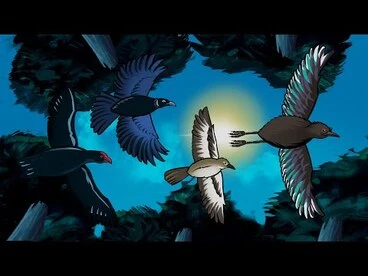

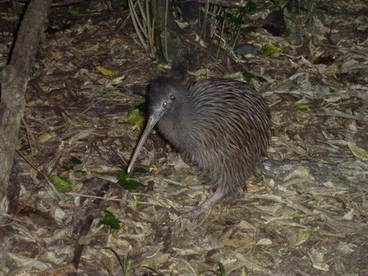






























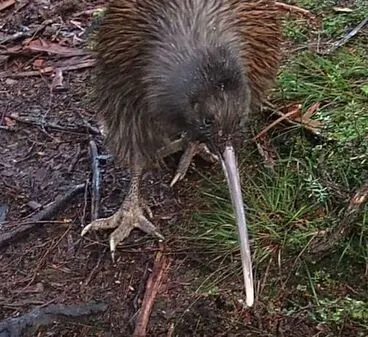









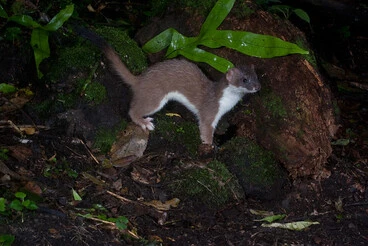































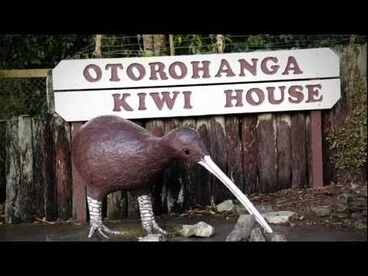




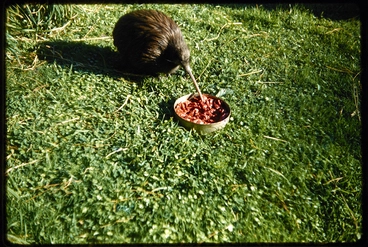


![Keulemans, John Gerrard, 1842-1912 :Apteryx Mantelli [North Island kiwi] London, 1873 Image: Keulemans, John Gerrard, 1842-1912 :Apteryx Mantelli [North Island kiwi] London, 1873](https://thumbnailer.digitalnz.org/?resize=770x&src=https%3A%2F%2Flive.staticflickr.com%2F585%2F21094309249_8daec12b46_z.jpg&resize=368%253E)



























